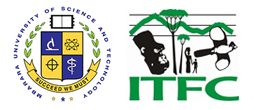Since the inception of multiple use programme in Bwindi Impenetrable National Park (BINP) in 1994, many changes have taken place. Local community demands for resources from the park have changed and evidently the programme has not addressed park resource needs of some key stakeholders. Specifically the needs of the Batwa were not met and as result were marginalized.
The Multiple use MoU’s were supposed to have been revised after every two years but this was never done. This report is a result of a community consultative initiative undertaken in July 2004 by a team from Uganda Wildlife Authority (UWA), Institute of Tropical Forest Conservation (ITFC), CARE Uganda (REPA programme) and local civil society organizations of African International Christian Ministries (AICM), Kisoro Foundation for Rural Development (KFRD) and Rukungiri Functional Literacy Center (RFLC).
The team sought to assess local community attitudes and new demands ten years after inception of multiple use programme in BINP. The local community new requests and demands will ultimately be used while negotiating for a review of the multiple use MoU’s in BINP.
A participatory Rural Appraisal (PRA) method was used to asses the attitudes and demands of the local people. The later were divided in two groups of the marginalized (Batwa) and the other local people (Bakiga and Bafumbira). Free exchange of ideas was encouraged by the PRA team in order to get unbiased ideas from the people.
From the interviews, it was quite clear that the Batwa have been marginalized since the inception of the multiple use programme of BINP. The Batwa highly value some forest products considered ‘illegal’ by the park management. The Batwa requested to be allowed collect wild honey and wild yams from the park.
They also requested to be allowed carry out fishing in some rivers of BINP. Other local people’s demands included products not allowed by park management like hoe handles, walking sticks, tree logs for beer boat making and some food products like mushrooms and fruits of Myrianthus holstii.
The local people already participating in plant resource extraction requested for increase in the allowed plant resource offtake quota and increase in areas allowed for plant harvesting. Beekeepers requested to be allowed collect medicinal and basketry weaving plant material concurrently with beekeeping activity in BINP.
In conclusion, we feel that local people’s demands for forest products from BINP is still high. The perceived low interest in multiple use by the local communities is because people’s demands for forest resources has been changing over time and yet the required resources are not permitted by the park management. Some of the resources demanded from BINP are not permitted for extraction and yet are highly valued by the local people.
We recommend that the Batwa be allowed to collect wild honey, wild yams and also carry out fishing activities as longer as they are not in conflict with biodiversity conservation. This should be after consultations with the studies carried out on wild honey, wild yams and fish in BINP by Byarugaba (1998), Byarugaba (2001) and Kasangaki (2002) respectively.
Together with the Batwa involvement, park management and ITFC could determine non-destructive methods of wild honey and yams collection and fishing in BINP. We also recommend an urgent need for revision of the present multiple MoU’s to cater for the new changes that have taken place since the inception of multiple use in BINP.
Report File
- DocumentCommunity attitudes on MU.pdf (672.51 KB)
